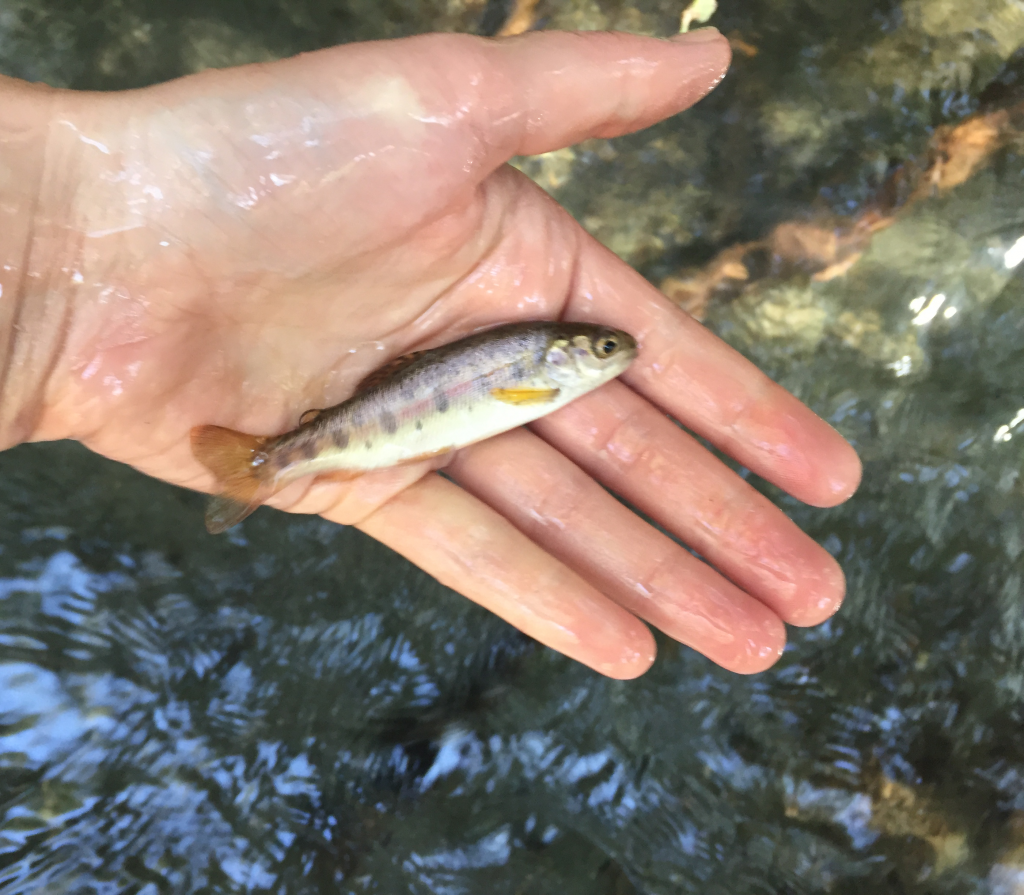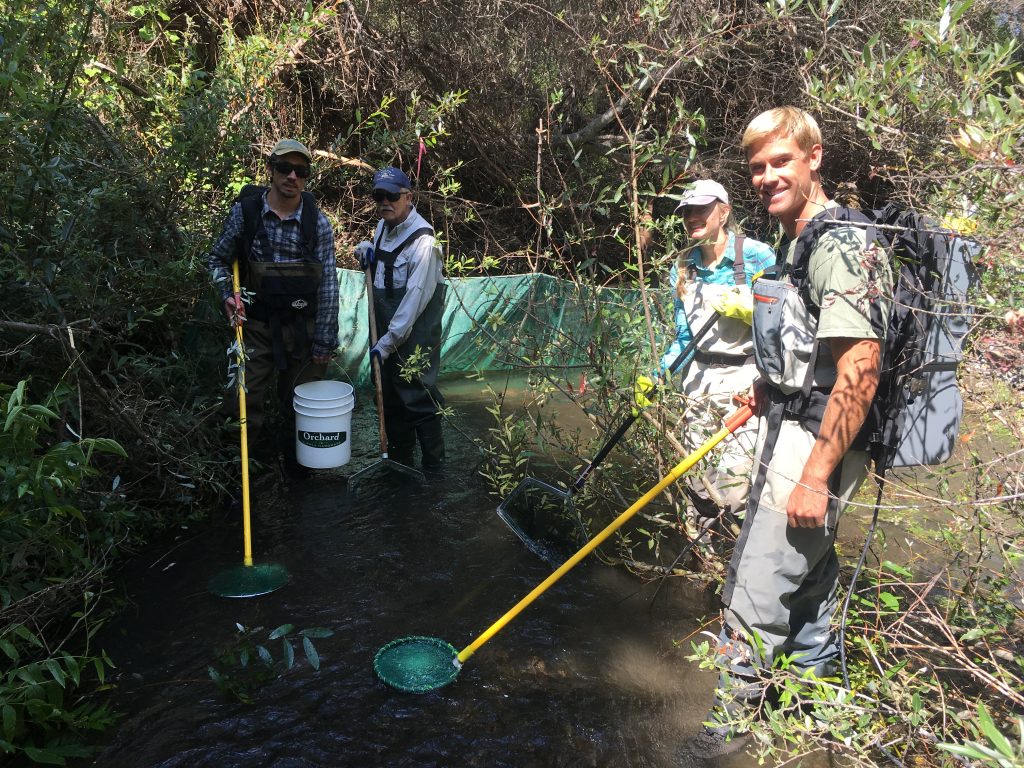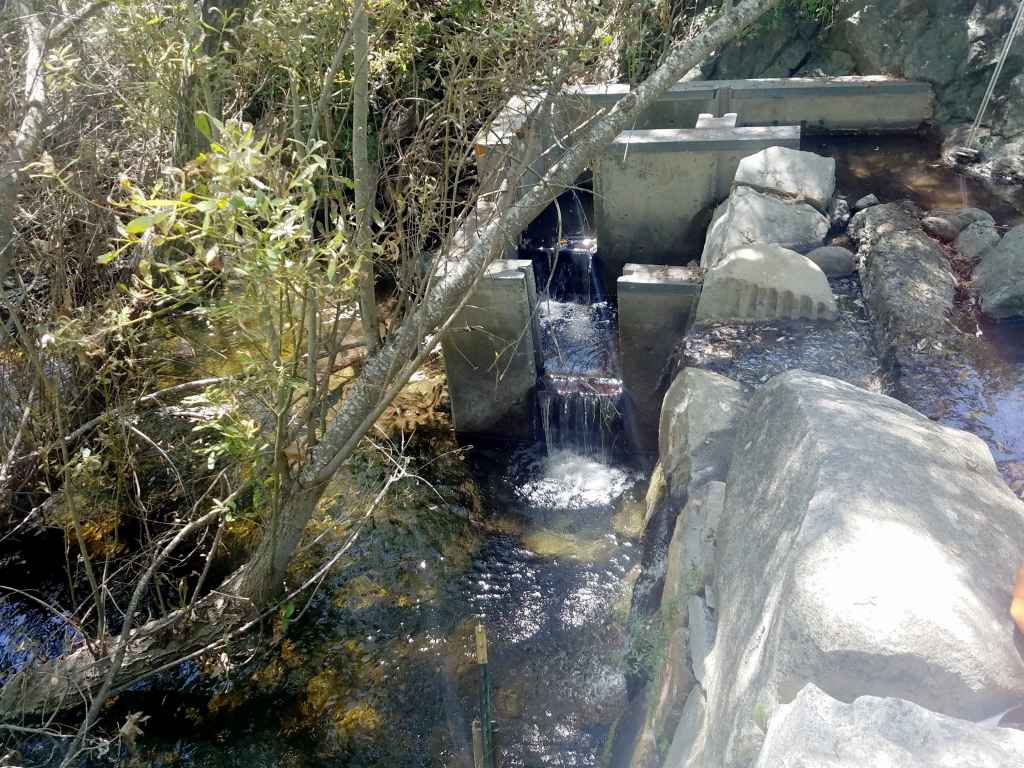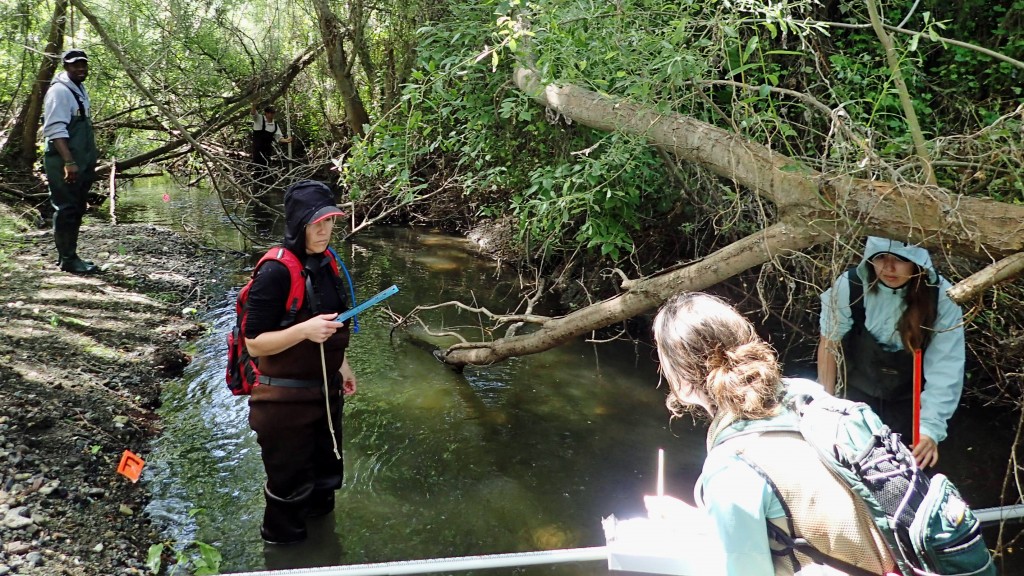Fulfilling our mission to protect and restore the Morro Bay estuary for people and wildlife requires a lot of hard work in the field. At the Estuary Program, that often entails doing research, restoration, and monitoring work out on the estuary and along the creeks that feed into it. Read on to see what we’ve been up to during the past month.
Fish surveys
Our field highlight for September was heading out with Stillwater Sciences and volunteers to complete fish surveys in Chorro Creek. We conducted fish sampling, a process of catching, identifying, measuring, and releasing fish, that allowed us to estimate the proportion of each species within the total population of fish in the creek. This calculation is called species composition.
We also removed non-native Sacramento Pikeminnow (Ptychocheilus grandis) from the creek. Pikeminnow put pressure on native steelhead trout (Oncorhynchus mykiss) as they eat juvenile steelhead and compete for food and habitat. An ongoing project is being implemented to remove non-native pikeminnow to support steelhead populations.

We used an electrofisher to capture fish. An electrofisher sends electricity through the water, which affects the movement of the fish, sending them towards our nets. This does not harm the fish.
We used nets to block off small portions of the creek, allowing us to capture all the fish in that area. We then counted, identified and measured all the fish. In addition to pikeminnow and steelhead, we also observed Sacramento sucker (Catostomus occidantalis), speckled dace (Rhinichthys osculus), and three-spine stickleback (Gasterosteus aculeatus).

Please stay tuned for an upcoming blog post highlighting results of a recent environmental DNA study to better understand pikeminnow impacts on steelhead in the Morro Bay watershed.
Fish habitat
Field staff removed a pressure transducer (a device that measures water level) installed on Pennington Creek at a fish ladder. This device was installed on the creek near an aging fish ladder that also had a water diversion on it.

Sharing what we’ve learned with data entry and reports
The main focus for the monitoring staff over the summer has been entering data and writing reports. We recently completed a report that shares the results of our 2017 bioassessment survey, which is available on our website. Stay tuned for more reports, including updated information on creek and bay health as well as eelgrass.

Subscribe to our weekly blog to have a an Estuary Program post delivered to your inbox every week.
Help protect and restore the Morro Bay estuary
- Donate to the Estuary Program today and support our work in the field, the lab, and beyond.
The Estuary Program is a 501(c)3 nonprofit. We depend on funding from grants and generous donors to continue our work. - Support us by purchasing estuary-themed gear from ESTERO. This locally owned and operated company donates 20% of proceeds from its Estuary clothing line and 100% of Estuary decal proceeds to the Estuary Program. Thank you, ESTERO!
- Purchase items from the the Estuary Program’s store on Zazzle. Zazzle prints and ships your items, and the Estuary Program receives 10% of the proceeds. Choose from mugs, hats, t-shirts, and even fanny packs (they’re back!) with our fun Estuary Octopus design, our classic Estuary Program logo, or our Mutts for the Bay logo.
Thank you for your support!